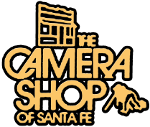Raw vs. Jpeg when and where to use them
By: Colton Newman
If you are just starting to shoot with a professional camera, whether it be Nikon or Canon, one of your first steps is to decide are you going to be shooting in JPEG or raw. Both modes have their benefits and their drawbacks. Knowing when to change the setting from JPEG to raw is an important step in becoming a better photographer.
JPEG is one of the most common formats for images. If you’ve ever pulled a photo off of Google chances are it was copied over as a JPEG. When operating your camera, the default setting will most likely be set for JPEGs. The reason the JPEG format is so widely used is because unlike raw, JPEG images are loosely compressed to save space on your memory card. Having more space on a memory card is a huge plus but at the same time JPEG images are not as easily manipulated in programs such as Photoshop or Bridge, and this is due to the image quality being diluted in the attempt to keep the file smaller.
When photographing a scene where small details are important, raw captures every detail that is visible in the cameras senor. This means that smaller details such as shadow, textures, and other information that makes an image more lifelike will be saved, and are available when post editing comes into play. Opposite of JPEG though the file size for raw images are by far larger and consume vast amounts of memory. Using raw mode/imagery has some some extra costs, raw images can’t simply be opened on less complex photo applications such as the Mac’s Photo app, and other cheep software. Images captured in raw will have deeper and richer colors, similar to details and shadows, colors captured in the raw format are manipulated far easier.
Say that an image you are wanting to use is over or underexposed, a digital image in JPEG format can only be minimally altered before grain starts to be seen. An image in the raw format however can be more easily altered without a hint of post editing, because light and shadows are easily selected and changed without affecting other aspects of the image.
Some photo opportunities should be shot in JPEG and others in raw. When you are planning to take a large number of photos and are limited by space, than shooting your images in JPEG might be the best choice. Other smaller occasions such as family gatherings, a trip to a park and even just Christmas morning would also be fine if shot in jpeg. If you have been hired to take professional photos for weddings, senior pictures, headshots, or photojournalistic pictures, use your cameras raw setting. This mode allows more editing options and will look much better to your employer. This is the professional mode.
If you are doing professional photography and are shooting in raw there is nothing more embarrassing than running out of space., so if you are shooting in raw and plan on shooting a lot of photos than extra memory cards are a must. With more memory cards comes more uploading onto your computer, this is where a photographer would start to invest in external hard drives and other larger memory storage devices.
Hopefully on your next adventure, photo shoot, or family gathering knowing the importance of when and where to use raw or jpeg will come in handy.



